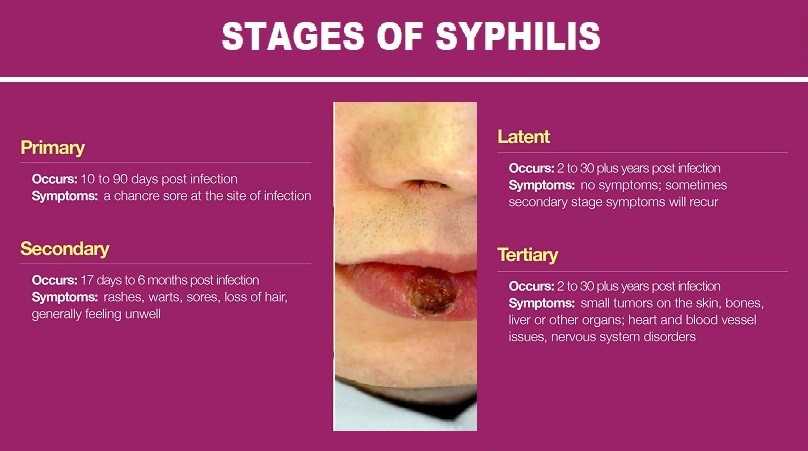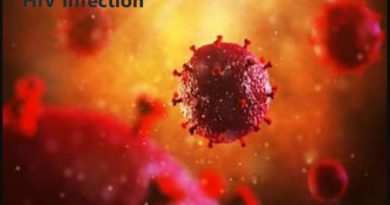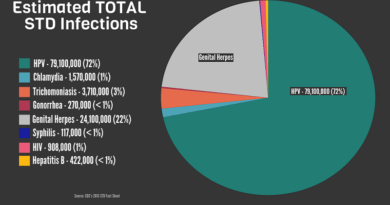Syphilis Infection, Symptoms and Stages
Syphilis is a sexually transmitted disease (STD) caused by Treponema pallidum bacteria. The disease has been around for centuries and was once thought to be incurable. However, today it is curable with antibiotics. Infection spreads from person to person through Sex and contact with an infected person.
Syphilis can have many non-specific symptoms and signs, which makes it hard to diagnose without testing. 1 in 10 people, who are infected, don’t show any symptoms! So, it may go unnoticed for years, progresses through its stages and causes serious damage to your body. Early disease can be treated. Only one dose of penicillin injection can be enough for treatment, but if left untreated, it can develop and cause severe damage to various organs of the body.
Syphilis infection spread
It is a disease that spreads easily, that is transmitted mainly through sexual contact. It may be transmitted, also, through kisses, or contact with an infected person. If the infected person is unaware of his infection, he may transmit the disease to others easily. Also, it can be from the infected pregnant mother to the fetus, which is called congenital syphilis, which may lead to fetal malformation and death.
Symptoms and stages of the disease
At the beginning: The disease appears as wounds or ulcers without pain, which are located on the mouth, anus and genitals. After the initial infection, the bacteria can become inactive, this is called latent stage, that may stay for years. Then, the disease becomes active again after a period of time. This is called Tertiary Syphilis.

Syphilis develops into 4 stages, where symptoms vary from one stage to another, but stages may overlap. The symptoms may be simple unnoticed, or no symptoms for several years.
Primary syphilis
The first sign of infection is a small sore called a chancre. The ulcer appears where the bacteria entered your body. While most people with syphilis develop only one chancre, some people develop several. The ulcer usually develops about three weeks after exposure. Ulcers may not be noticed because they are usually painless and may be hidden inside the vagina or rectum. The ulcer heals on its own within three to six weeks.
Secondary syphilis
Within a few weeks of the original ulcer healing, you may have a rash that begins on your torso but eventually covers your entire body — even the palms of your hands and the soles of your feet. This rash usually doesn’t itch and may be accompanied by wart-like sores in your mouth or genital area. Some people also experience hair loss, muscle aches, fever, sore throat, and swollen lymph nodes. These signs and symptoms may disappear within a few weeks or appear and disappear frequently for up to a year.
Latent syphilis
If you are not treated for syphilis, the disease moves from the secondary stage to the latent (latent) stage, when you have no symptoms. The latent stage can last for years. Signs and symptoms may never return, or the disease may progress to the third (third) stage.
Tertiary syphilis
About 15% to 30% of people with syphilis who do not receive treatment will develop a complication known as late (high) syphilis. In the late stage, the disease may damage the brain, nerves, eyes, heart, blood vessels, liver, bones, and joints. These problems may occur many years after the original, untreated infection.
Diagnosis
The patient’s history, physical examination, laboratory testing are the diagnostic tools for the diseases. Symptoms alone are not enough as they are not common or not noticeable.
Common tests & procedures include the following: Physical examination of the rashes or sores, Blood test to detect bacteria, Fluid examination from the sore and Spinal tap (lumbar puncture) to extract the spinal fluid in case of nervous system problems. It is mainly diagnosed by laboratory tests that include:
- Blood tests can detect the presence of antibodies that the body produces to eliminate the infection. The antibodies can be detected even after many years. So, the test can diagnose a current or old infection. Blood test is the preferred method to diagnose syphilis. Two types of tests can detect and confirm syphilis using blood sample.
- Cerebrospinal fluid test in cases of nervous system complications of syphilis.
Blood Tests
1- Non-Treponemal Tests (indirect tests)
- Non-treponemal blood test is the first to start with, which are 2 types: the Venereal Disease Research Laboratory (VDRL) test and the Rapid Plasma Reagin (RPR). Both detect antibodies that are produced by the body in response to infection.
- They are inexpensive and easy to use. But they are not specific; they may give false-positive results. So, a positive result must be confirmed with another test from tests below.
2- Treponemal Tests (direct tests)
One of the following tests can be used to confirm the positive result. The tests are specific and accurate.
- Chemiluminescence immunoassays (CIA)
- Enzyme immunoassays (EIA)
- Fluorescent treponemal antibody absorption (FTA-ABS)
- T. pallidum particle agglutination assay (TP-PA)
- Treponemal tests differ from non-treponemal tests in that they detect antibodies specific to T. pallidum rather than antibodies produced in response to damage caused by T. pallidum.5
When to do the test? Window Period for Syphilis
Testing must be done after the window period. Windo period is the time between exposure to an infection and when a test can detect the infection. which is 21 days for syphilis.
Treatment
Syphilis is easy to cure by medications, when diagnosed early. Penicillin, (benzathine penicillin G), is the medicine of choice as it is effective and safe. It can kill the organism that causes syphilis at any stage of the disease. A single injection of penicillin is enough to treat the infection in primary, secondary and latent stages. But additional doses are required for old syphilis.
Congenital syphilis
Congenital syphilis is infection transmitted from the mother to her fetus. It is usually devastating to the fetus if maternal infection is not detected and treated sufficiently early in the pregnancy. Live-born infants of infected mothers should be tested at birth.
In 2016, WHO estimated 661 000 total congenital syphilis cases globally, including:
- 143 000 early fetal deaths and stillbirths
- 61 000 neonatal deaths
- 41 000 preterm or low-birth weight births
- 109 000 infants with a clinical diagnosis of congenital syphilis.




